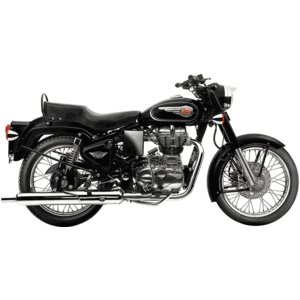Royal Enfield Bullet 500 (2009-2020): A Timeless Ride Through Modernity
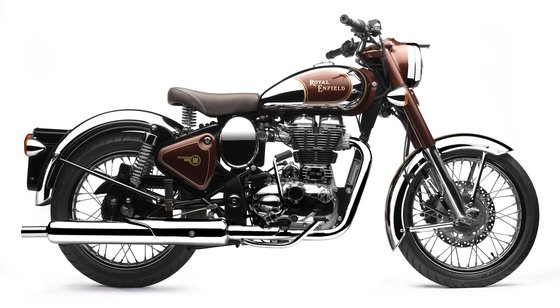
Introduction
The Royal Enfield Bullet 500 isn’t just a motorcycle—it’s a rolling heirloom. Produced from 2009 to 2020, this generation of the Bullet 500 bridged the gap between vintage charm and modern engineering, offering riders a unique blend of nostalgia and reliability. Whether clad in military-inspired matte finishes or dripping in chrome, the Bullet 500 became a canvas for riders seeking character in an era of homogenized motorcycles. This review dives into what makes this machine a cult classic, from its iconic thump to its surprisingly practical soul.
Design: Retro Reimagined
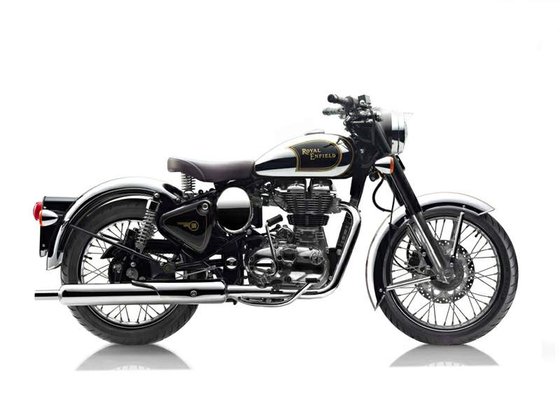
The Bullet 500’s design is a masterclass in timelessness. With its teardrop fuel tank, sprung solo seat, and valanced fenders, it pays homage to the 1950s-era motorcycles that defined British motorcycling. But Royal Enfield didn’t just copy-paste the past. Over its 11-year run, the Bullet 500 evolved through special editions that added flair without diluting its essence:
- Classic Tribute Black (2020): A swan song with dual-tone black paint, hand-painted pinstripes, and a serialized plaque marking the end of the 500cc UCE era.
- Desert Storm/Battle Green: Matte finishes and utilitarian styling nodded to Royal Enfield’s military heritage, complete with "ammo box" panniers on some variants.
- Chrome Editions: Lustrous tanks and fenders elevated the classic silhouette, while the Lewis Leathers Limited Edition (50 units worldwide) added bespoke leather accents.
The 800 mm (31.5") seat height and neutral riding posture make it accessible for riders of all statures. Details like the tiger-eye headlamp nacelle and wire-spoke wheels shod with Avon Speedmaster tires complete the vintage illusion. Yet, modern touches like ABS (on later models) and LED lighting discreetly keep it grounded in the 21st century.
Engine and Performance: The Heartbeat of Tradition

At its core lies the 499cc air-cooled single-cylinder engine—a unit that’s as much about feel as it is about function. With a 84 x 90 mm bore/stroke, this OHV pushrod engine prioritizes torque over top-end frenzy, delivering 41.3 Nm (30.5 lb-ft) at 4000 rpm—enough to lug you up hills in 4th gear without complaint. The 27.2 hp output won’t set your hair on fire, but it’s tuned for real-world usability, with a linear powerband that forgives lazy gear changes.
Key upgrades over earlier models include:
- Electronic Fuel Injection (EFI): Replaced carburetors in 2009 for smoother cold starts and better altitude tolerance.
- 5-speed transmission: A welcome upgrade from the 4-speed ‘boxes of older Bullets, reducing highway drone.
- Unit Construction Engine (UCE): Integrated gearbox and engine reduced vibrations and oil leaks.
The signature “thump” is softer than pre-UCE models but still distinct—a bass-heavy rhythm that turns heads at traffic lights. Fuel efficiency hovers around 30-35 km/l (70-85 mpg), making it a frugal companion for long rides.
Handling and Braking: Relaxed, Not Lazy
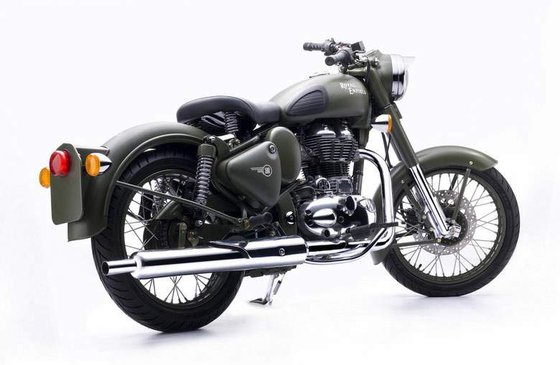
Weighing 190-196 kg (418-432 lbs), the Bullet 500 isn’t a featherweight, but its low center of gravity masks the heft. The 35mm telescopic forks and 5-step adjustable twin shocks are tuned for comfort, absorbing potholes with a plushness that modern ADV bikes envy. However, spirited cornering reveals its limits—the 19” front wheel and relaxed steering geometry favor stability over flickability.
Braking evolved over the years:
- Early models: 280mm front disc + 153mm rear drum (adequate, but required planning).
- Post-2016: ABS became standard, boosting confidence in wet conditions.
The 1380 mm (54.3") wheelbase and 135 mm (5.3") ground clearance strike a balance between highway manners and light off-road capability. It’s no scrambler, but gravel paths and dirt trails are manageable with the right tires.
Comfort and Practicality
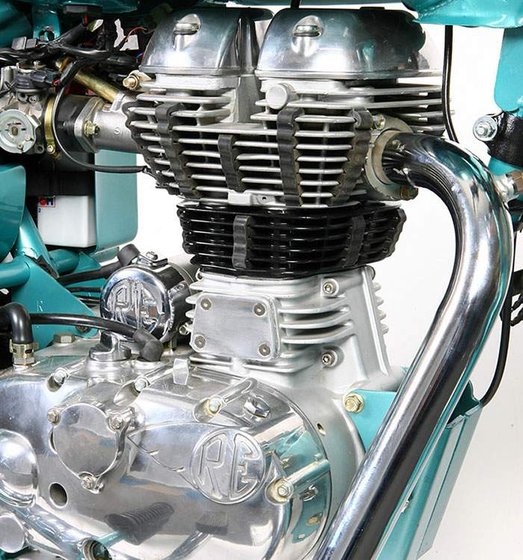
The Bullet 500’s ergonomics are a study in simplicity. The wide, sprung seat feels like a park bench in the best way—supportive for hours, yet forgiving on rough roads. The upright handlebars and mid-set pegs create a neutral riding triangle, though taller riders might crave more legroom on >100 km rides.
Practical touches include:
- 13.5L fuel tank: Good for ~250 km (155 miles) between fills.
- Toolbox integration: A throwback to when riders fixed their own bikes.
- Customization potential: From café racer kits to luggage racks, the aftermarket is vast.
Vibration is present but manageable, peaking around 4000-5000 rpm—right where the torque curve flattens. Rubber-mounted footpegs and grips on later models helped dampen buzz.
Competition: How Does It Stack Up?
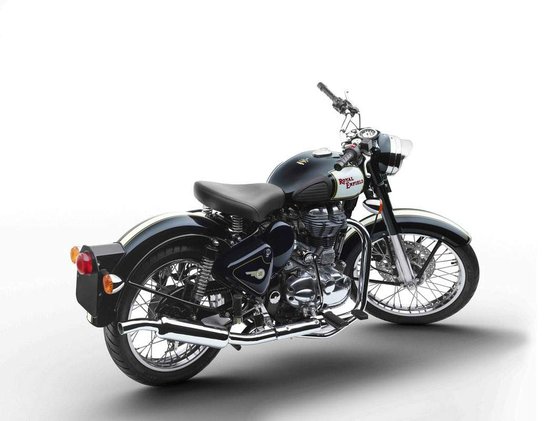
The Bullet 500’s charm lies in its niche, but here’s how it compares to peers:
- Triumph Bonneville T100:
- Twin-cylinder refinement vs. the Bullet’s single-cylinder soul.
- Double the power (65 hp) but triple the price.
-
The Bonneville appeals to retro enthusiasts with deeper pockets.
-
Kawasaki W800:
-
Aesthetic rival with a 773cc parallel-twin. Smoother, but lacks the Bullet’s DIY-friendly simplicity.
-
Honda CB500X:
- Modern parallel-twin practicality vs. the Bullet’s emotional appeal.
- The Honda wins on specs; the Enfield wins on storytelling.
The Bullet 500’s advantage? It’s a lifestyle product first, transportation second. Competitors can’t match its heritage or aftermarket ecosystem.
Maintenance: Keeping the Legend Alive

The UCE engine is robust but demands attention to detail:
- Oil changes: Every 5000 km (3100 miles) using SAE 15W-50 (2.5L with filter).
- Chain maintenance: The 101/102-link chain needs regular lubrication—a ritual owners quickly adopt.
- Valve adjustments: Hydraulic lifters eliminated manual adjustments, a huge plus for home mechanics.
- Brake fluid: DOT 4 flushes every 2 years prevent sponginess.
Common upgrades through MOTOPARTS.store:
- Performance exhausts: Unlock a louder thump and minor power gains.
- High-flow air filters: Pair with EFI remaps for smoother throttle response.
- Upgraded suspension: Gas-charged shocks for heavier riders or two-up touring.
Owners praise its mechanical simplicity—most jobs can be done with basic tools. However, corrosion-resistant coatings on bolts and frequent checks of the 35mm fork seals (265ml SAE 10W oil) are wise in humid climates.
Conclusion: More Than a Machine
The Royal Enfield Bullet 500 isn’t about specsheets or lap times. It’s about the joy of unhurried rides, the camaraderie at vintage bike meets, and the pride of keeping history alive. While later models added ABS and EFI, the soul remained untouched—a testament to Royal Enfield’s commitment to its legacy. For riders seeking a motorcycle with personality, the Bullet 500 isn’t just an option; it’s a pilgrimage.
Whether you’re restoring a 2009 G5 or personalizing a 2020 Tribute Black, MOTOPARTS.store has the gear to make your Bullet 500 uniquely yours. From period-correct accessories to modern performance upgrades, the journey is yours to shape.
Specifications sheet
| Engine | |
|---|---|
| Stroke: | Four-stroke |
| Max power: | 20 kW | 27.0 hp |
| Engine oil: | 15W-50 API SL |
| Max torque: | 41 Nm |
| Fuel system: | Electronic Fuel Injection (EFI) |
| Max power @: | 5250 rpm |
| Displacement: | 499 ccm |
| Max torque @: | 4000 rpm |
| Configuration: | Single |
| Cooling System: | Air Cooled |
| Compression ratio: | 8.5:1 |
| Engine oil capacity: | 2.5 |
| Number of cylinders: | 1 |
| Dimensions | |
|---|---|
| Wheelbase: | 1370 mm (53.9 in) |
| Dry weight: | 190 |
| Wet weight: | 196 |
| Seat height: | 800 mm (31.5 in) |
| Overall width: | 800 mm (31.5 in) |
| Overall height: | 1080 mm (42.5 in) |
| Overall length: | 2180 mm (85.8 in) |
| Ground clearance: | 135 mm (5.3 in) |
| Fuel tank capacity: | 14.5 L (3.8 US gal) |
| Drivetrain | |
|---|---|
| Clutch: | Wet multiplate |
| Final drive: | chain |
| Chain length: | 102 |
| Transmission: | 5-speed, constant mesh |
| Rear sprocket: | 38 |
| Front sprocket: | 17 |
| Maintenance | |
|---|---|
| Rear tire: | 110/80-18 |
| Front tire: | 90/90-19 |
| Brake fluid: | DOT 4 |
| Spark plugs: | NGK CR8E or NGK CR8EIX |
| Spark plug gap: | 0.8 |
| Forks oil capacity: | 0.53 |
| Engine oil change interval: | Every 5000 km or 2 years |
| Valve clearance (intake, cold): | 0.10–0.20 mm |
| Valve clearance check interval: | 24,000 km / 15,000 mi |
| Valve clearance (exhaust, cold): | 0.20–0.30 mm |
| Recommended tire pressure (rear): | 1.9–2.0 bar (27.6–29 psi) |
| Recommended tire pressure (front): | 1.3–1.4 bar (18.9–20.3 psi) |
| Chassis and Suspension | |
|---|---|
| Frame: | Single downtube, using engine as stressed member |
| Rear brakes: | 240 mm disc, 1-piston caliper (ABS on some models) |
| Front brakes: | 280 mm disc, 2-piston caliper (ABS on some models) |
| Rear suspension: | Twin shocks, 5-step adjustable preload, 80 mm travel |
| Front suspension: | 35mm telescopic fork, 130 mm travel |



